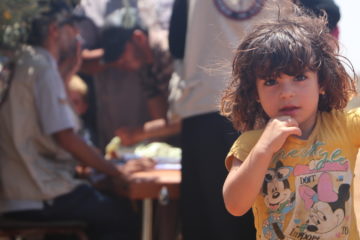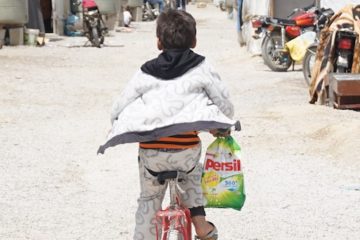June 16, 2014
According to the director of the United Nation Office of Coordination of Humanitarian Affairs, UNOCHA, the Syrian crisis is the worst humanitarian crisis in terms of the disconnection between the international response and realities on the ground. At one point in the crisis, all directors of major UN agencies publically declared that the UN had failed the Syrian people.
Throughout the crisis, there has been a clear disconnect between the suffering of civilian populations on one hand, and the response of the international community on the other. The UN and many other international NGOs have resorted to issuing period reports detailing the multiple aspects of the crisis. However, they have neglected to provide practical, proactive, and sustainable solutions to resolve the problems which they have described. The UN Security Council has exerted no real effort to address the needs of trapped populations, estimated at about 250,000 people, or to provide access to civilians in areas not controlled by the Syrian government. Most aid provided through the UN response plan was supplied through official channels in areas controlled by the Syrian government. However, an estimated one third to one half of the population, outside of government-controlled areas, has remained in urgent need of medical and humanitarian assistance.
International relief organizations and NGOs like the International Committee for the Red Cross and Red Crescent, OXFAM, Save the Children, and all other UN agencies are usually the main providers of medical and humanitarian relief in areas of conflict or disaster. But in the case of Syria, many of these powerful and well-funded organizations have been practically absent from areas of urgent need. There are real or perceived challenges related to security, safety, and access. Sometimes Syrian authorities or warring parties interfere. There are bureaucratic hurdles, inflexible policies, insistence upon cross-lines relief, inaccurate needs assessment, and an absence of a United Nations Security Council (UNSC) mandate for cross-border relief. As a result, tens of thousands of Syrian civilians have died unnecessarily, not from direct injuries from violence, but as the result of malnutrition, starvation, and a shortage of food, medical supplies, clean water, blood products, and medical care. The magnitude of needless death resulting from the lack of an orchestrated effort on the behalf of the international community has yet to be calculated.
Millions of Syrians have been left without consistent or adequate basic humanitarian or medical relief. Only recently, and after the United Nations Security Council (UNSC) Resolution 2139, UNOCHA has stepped up its efforts to play a more active role in relief coordination among diaspora organizations and INGOs.
To their credit, Syria’s neighboring countries have done a great service to the displaced Syrian population by keeping the borders open (with few exceptions), and by providing shelter, basic needs, and healthcare to millions of distressed Syrians. The Turkish Government has spent more than 2.5 billion dollars on Syrian refugees, providing free shelter, food, medical care, education and other services to more than one million refugees. The Turkish people have opened their homes and hearts to their Syrian neighbors, and they have treated them as “guests,” not as refugees. Jordan has also provided shelter, built new refugee camps, and shared its limited resources with more than 1 million Syrian refugees. Syrian children have had full access to Jordanian schools, and Syrian patients have received reasonable medical care. Lebanese NGOs and civic organizations have mobilized to provide much needed services to more than 2 million Syrian refugees, in spite of the delicate demographic and political balance in their small country. Due to the large number of refugees in Lebanon and its limited capacity, more help is needed to address the basic needs of the refugees, especially in the areas of shelter, medical care, psycho-social services, and education. Iraq became a refuge for a large number of Kurdish Syrian refugees fleeing from the northeastern Syrian governorates.
In spite of their limited capacity, local NGOs, especially the Syrian Red Crescent, and many others, stepped up their efforts to provide life-saving humanitarian and medical help to local populations and internally displaced people.
Syrian diaspora NGOs, including SAMS, were able to reach most areas in Syria, coordinating effectively with local NGOs and local civic councils. They built an infrastructure of medical and humanitarian assistance, successfully addressing many obstacles relating to capacity, lack of experience, access, security, safety, administrative challenges in host countries, and lack of support from the more established international NGOs and the UN.



